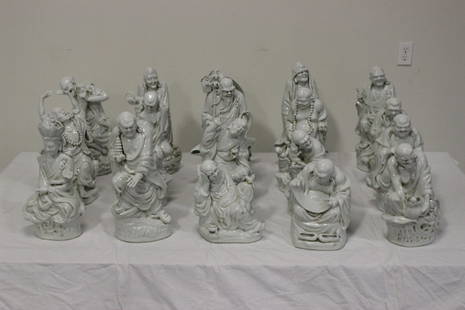
Sculptural group MEISSEN MANUFACTURE. Germany, 19th century. "Gallant scene". Enamelled porcelain.
Meissen Sale History
View Price Results for MeissenRelated Sculptures & Carvings
More Items from Meissen
View MoreRecommended Art
View More




Item Details
Description
Sculptural group MEISSEN MANUFACTURE. Germany, 19th century.
"Gallant scene".
Enamelled porcelain.
Seal on the base.
With old restoration on the back.
Measurements: 23 x 27 x 16 cm.
The Meissen Manufactory was the first European factory to produce authentic porcelain. The manufacture was started by the scientist Ehrenfried Walther von Tchirnhaus in 1708, and after his untimely death his work was continued by Joahnn Friedrich Böttger, who remained practically imprisoned in the factory premises in order to protect the secret of the porcelain formula. The production of Meissen porcelain began in 1710, one year after the factory was founded by Augustus the Strong, and soon achieved great fame throughout Europe. In order to prevent forgeries, he introduced his famous mark, two crossed swords, in 1720, making his one of the oldest pottery marks in existence (it still remains on the wares of Meissen's heir firm, the Staatliche Porzellan-Manufaktur Meissen GMBH). Initially, Meissen's production imitated oriental production, especially Japanese kakiemon ("indianische Blumen"), although enamelled pieces with landscape, floral and gallant themes were also produced, the latter derived from the paintings of the French painter Antoine Watteau. Undecorated glazed porcelain pieces were also produced and sold to other workshops, where they were decorated with enamels. However, in 1717 a former Meissen worker, Samuel Stöltzel, sold the secret of porcelain to a manufactory in Vienna, and by 1760 there were about thirty manufacturers of genuine porcelain in Europe. However, most of these manufactories produced soft-paste porcelain, due to the difficulty of accessing kaolin, the basic ingredient of genuine (hard-paste) porcelain. After an initial production in the Rococo style, which evolved towards the Neoclassical in the 1750s, the 19th century witnessed a new style known as the "second Rococo", inspired by the early productions of the manufactory, which coexisted with other historicisms, including round sculpture, mainly in enamelled porcelain, following both Rococo and Neoclassical models.
"Gallant scene".
Enamelled porcelain.
Seal on the base.
With old restoration on the back.
Measurements: 23 x 27 x 16 cm.
The Meissen Manufactory was the first European factory to produce authentic porcelain. The manufacture was started by the scientist Ehrenfried Walther von Tchirnhaus in 1708, and after his untimely death his work was continued by Joahnn Friedrich Böttger, who remained practically imprisoned in the factory premises in order to protect the secret of the porcelain formula. The production of Meissen porcelain began in 1710, one year after the factory was founded by Augustus the Strong, and soon achieved great fame throughout Europe. In order to prevent forgeries, he introduced his famous mark, two crossed swords, in 1720, making his one of the oldest pottery marks in existence (it still remains on the wares of Meissen's heir firm, the Staatliche Porzellan-Manufaktur Meissen GMBH). Initially, Meissen's production imitated oriental production, especially Japanese kakiemon ("indianische Blumen"), although enamelled pieces with landscape, floral and gallant themes were also produced, the latter derived from the paintings of the French painter Antoine Watteau. Undecorated glazed porcelain pieces were also produced and sold to other workshops, where they were decorated with enamels. However, in 1717 a former Meissen worker, Samuel Stöltzel, sold the secret of porcelain to a manufactory in Vienna, and by 1760 there were about thirty manufacturers of genuine porcelain in Europe. However, most of these manufactories produced soft-paste porcelain, due to the difficulty of accessing kaolin, the basic ingredient of genuine (hard-paste) porcelain. After an initial production in the Rococo style, which evolved towards the Neoclassical in the 1750s, the 19th century witnessed a new style known as the "second Rococo", inspired by the early productions of the manufactory, which coexisted with other historicisms, including round sculpture, mainly in enamelled porcelain, following both Rococo and Neoclassical models.
Buyer's Premium
- 26%
Sculptural group MEISSEN MANUFACTURE. Germany, 19th century. "Gallant scene". Enamelled porcelain.
Estimate €150 - €180
13 bidders are watching this item.
Shipping & Pickup Options
Item located in Barcelona, -, esOffers In-House Shipping
Payment

TOP


















































































